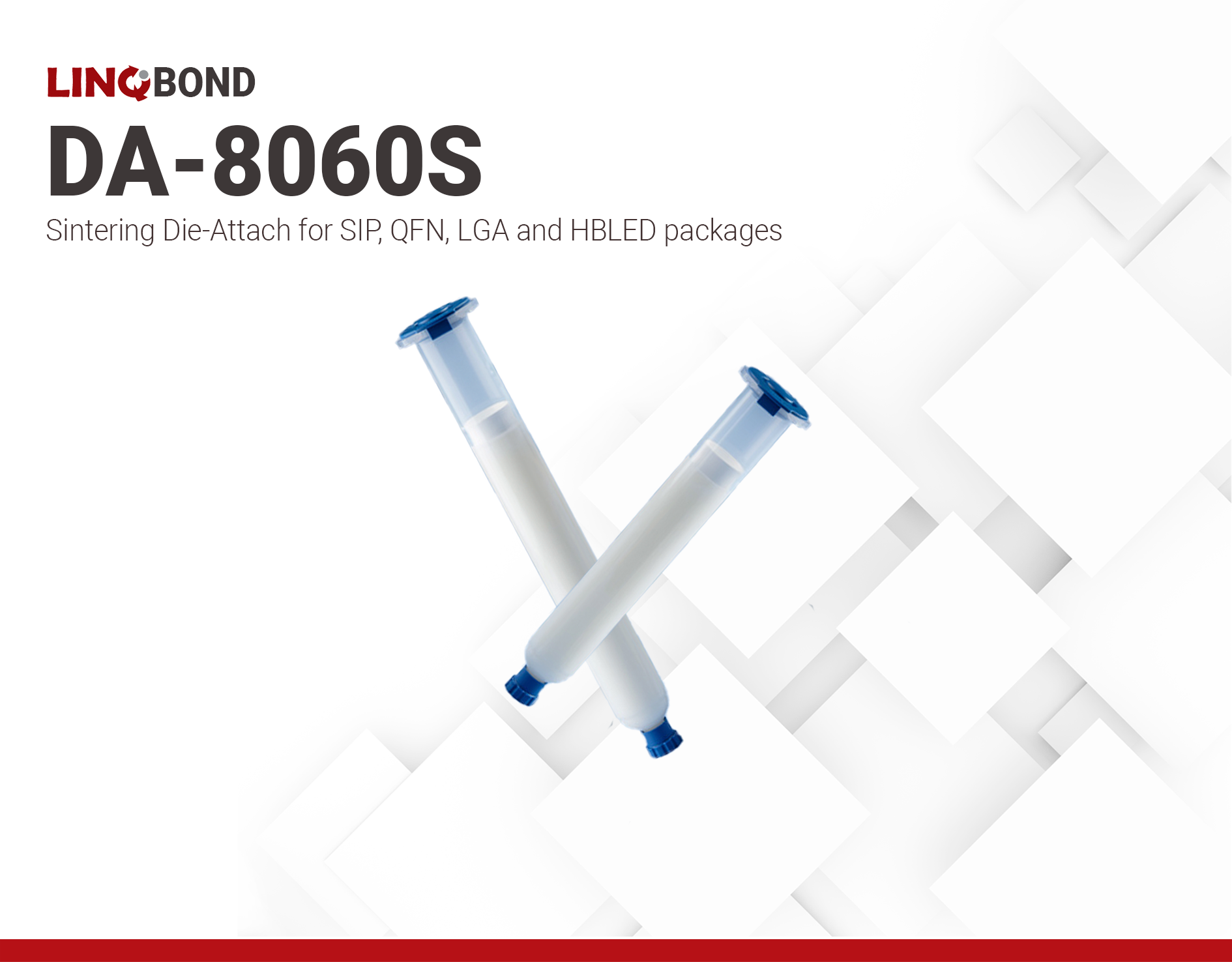LINQBOND DA-8060S | Sintering Die-Attach
- PFAS free
- Low Resin Bleed-Out (RBO)
- High thermal conductivity and adhesion to various leadframes
Product Description
LINQBOND DA-8060S is a single-component, pressure-less silver sintering die attach adhesive, known for its exceptional adhesion, high thermal conductivity, and high reliability. It performs excellently with various leadframes types, including Ag-spot plated, bare copper, PPF, and ceramic. Additionally, LINQBOND DA-8060S boasts exceptional workability and low Resin bleed out properties, making it ideal for high-volume semiconductor packaging applications.
LINQBOND DA-8060S is typically used as die attach for high power applications such as 5G, EVs, Industrial , Consumer electronics, Telecommunications, Aerospace, Defense and semiconductor packages such as SIP, QFN, LGA and HBLED.
Cure Schedule
Ramp to 130°C and hold for 30 min + ramp to 220°C and hold for 90 min
Ramp rate 5°C/min
Technical Specifications
| General Properties | |||||||
| Filler Content | 85 % | ||||||
| Work life @25°C Work life @25°C Work life is the amount of time we have to work with a material until it is no longer able to be easily worked and applied on a substrate. It is based on the change in viscosity and it can rely on the application requirements. | 24 hours | ||||||
| |||||||
| Electrical Properties | |||||||
| Volume Resistivity Volume Resistivity Volume resistivity, also called volume resistance, bulk resistance or bulk resistivity is a thickness dependent measurement of the resistivity of a material perpendicular to the plane of the surface. | 2.5x10-5 Ohms⋅cm | ||||||
| Thermal Properties | |||||||
| Glass Transition Temperature (Tg) Glass Transition Temperature (Tg) The glass transition temperature for organic adhesives is a temperature region where the polymers change from glassy and brittle to soft and rubbery. Increasing the temperature further continues the softening process as the viscosity drops too. Temperatures between the glass transition temperature and below the decomposition point of the adhesive are the best region for bonding. The glass-transition temperature Tg of a material characterizes the range of temperatures over which this glass transition occurs. | 165 °C | ||||||
| Thermal Conductivity Thermal Conductivity Thermal conductivity describes the ability of a material to conduct heat. It is required by power packages in order to dissipate heat and maintain stable electrical performance. Thermal conductivity units are [W/(m K)] in the SI system and [Btu/(hr ft °F)] in the Imperial system. | 120 W/m.K | ||||||
| |||||||
| Mechanical Properties | |||||||
| |||||||
| |||||||
| Physical Properties | |||||||
| Thixotropic index Thixotropic index Thixotropic Index is a ratio of a material s viscosity at two different speeds in Ambient temperature, generally different by a factor of ten. A thixotropic material s viscosity will decrease as agitation or pressure is increased. It indicates the capability of a material to hold its shape. Mayonnaise is a great example of this. It holds its shape very well, but when a shear stress is applied, the material easily spreads. It helps in choosing a material in accordance to the application, dispense method and viscosity of a material. | 5.8 | ||||||
| Viscosity Viscosity Viscosity is a measurement of a fluid’s resistance to flow. Viscosity is commonly measured in centiPoise (cP). One cP is defined as the viscosity of water and all other viscosities are derived from this base. MPa is another common unit with a 1:1 conversion to cP. A product like honey would have a much higher viscosity -around 10,000 cPs- compared to water. As a result, honey would flow much slower out of a tipped glass than water would. The viscosity of a material can be decreased with an increase in temperature in order to better suit an application | 12000 mPa.s | ||||||



